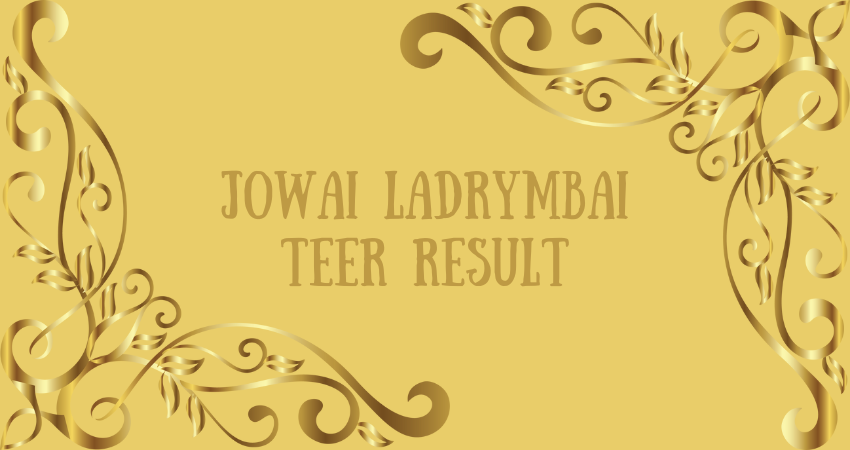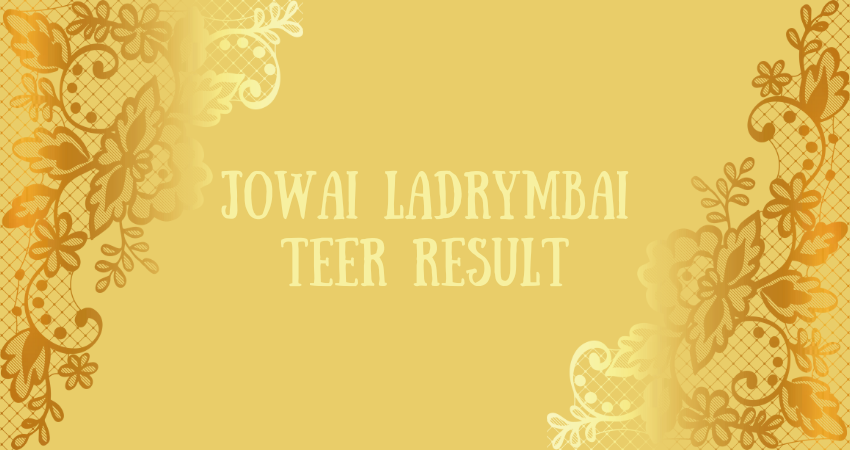Beneath the verdant hills of Meghalaya, where the clouds seem to kiss the earth and the winds carry secrets of the ages, lies a story of mystique, hope, and numbers. The history of the jowai ladrymbai teer result is not merely about a game; it’s a saga—a weaving of culture, tradition, and human emotion into the fabric of life. In this land where the skies paint themselves in hues of mystery, teer transcends the realm of ordinary games. It becomes a bridge between dreams and reality, between luck and belief, and between the past and the present.
This is the story of the humble teer, of arrows released with precision and hearts pounding in rhythm, and of how it found its place in the lives of those who dared to hope, against all odds, in the power of destiny.
The Birth of Teer: A Tradition Rooted in Archery
In the shadows of ancient Khasi folklore, where the ancestors walked with reverence for nature, archery was born—not as a game, but as a way of life. The bow and arrow, crafted with care and imbued with significance, were tools of survival and symbols of pride.
In the quiet corners of Jowai and Ladrymbai, archery wasn’t merely about skill; it was a dance of precision, patience, and spiritual connection. Over time, this art transformed. Archery, once a testament to survival, became a communal activity—a celebration of life, where villagers gathered, not just to compete, but to connect.
The shift from sport to game was gradual, spurred by the imagination of a people deeply attuned to symbolism. The seeds of teer were sown when numbers were first etched into the act of counting arrows, turning archery into something more profound—a game of chance, of predictions, and of faith.
The Rise of the Teer Game: From Skill to Spirituality
What makes teer distinct isn’t just its reliance on archery but its deeply intertwined relationship with belief. In Meghalaya, life has always been shaped by the sacred. To the Khasi people, numbers hold cosmic significance, each digit whispering secrets from the universe.
Thus, when teer emerged as a formalized game, it became more than entertainment—it became a ritual. Villagers, elders, and even skeptics found themselves caught in its allure. Players would interpret dreams, search for omens, and consult the spiritual guides of their clans, seeking the lucky numbers foretold by the universe.
In the towns of Jowai and Ladrymbai, teer grew from whispers of excitement to thunderous applause, captivating the imaginations of those who sought luck in its folds. The archers became the storytellers, their arrows weaving fates in the air, while the results of their efforts gave people reasons to hope, reasons to believe.

Teer in Jowai and Ladrymbai: The Beating Heart of the Game
It was in Jowai and Ladrymbai, two small yet vibrant towns nestled in Meghalaya’s embrace, that teer found its most ardent followers. Here, archery clubs began to form, each bringing together individuals from diverse walks of life. Every afternoon, these clubs would echo with the sound of taut bows and the hum of arrows slicing through the air.
For the spectators, the magic wasn’t merely in watching the arrows hit the target; it was in the anticipation, the waiting for the results, and the unspoken belief that fate could be altered with the right guess. The Jowai Ladrymbai Teer Result was more than just a number—it was a beacon of possibility, a manifestation of dreams.
The Evolution of the Teer Result: A Community’s Lifeline
As the years passed, teer evolved into an organized game, with strict rules and government oversight. The teer counters, where tickets were sold, became hubs of energy—alive with chatter, predictions, and the exchanging of dreams. Players placed bets not just with money, but with emotion, each one holding onto a thread of hope.
The results of these games, announced daily, were eagerly awaited by the entire community. The Jowai Ladrymbai Teer Result, in particular, became a cultural phenomenon. It wasn’t just a set of numbers displayed on a board—it was a story, the culmination of whispers in the wind, dreams in the night, and arrows fired under the watchful gaze of the hills.
Dreams and Numbers: The Power of Interpretation
In the world of teer, numbers are not mere digits; they are vessels of meaning. Players interpret these numbers through dreams, symbols, and intuition. If a woman dreams of a river, it may symbolize a particular number. If a man notices a peculiar bird, he might see it as an omen.
The belief in these interpretations adds a poetic rhythm to the game. It turns teer into an intricate dance of faith and reason. The people of Jowai and Ladrymbai know this dance well, relying on their dreams and instincts as much as on their knowledge of the game.
Challenges and Resilience: The Teer Industry’s Struggle
Yet, the history of the Jowai Ladrymbai Teer Result is not without its shadows. As the game gained popularity, concerns arose over gambling, addiction, and exploitation. Regulatory measures were introduced to ensure fair play, and archery clubs were required to operate within strict guidelines.
Despite these challenges, teer thrived. Its resilience lay in its cultural roots—in the way it connected people, in the way it preserved the art of archery, and in the way it offered hope in a world often fraught with uncertainty. For the people of Jowai and Ladrymbai, teer was not a problem to be solved; it was a tradition to be cherished.
The Digital Age: Teer in the 21st Century
With the advent of technology, teer entered the digital age. The Jowai Ladrymbai Teer Result, once displayed on wooden boards and announced in marketplaces, now reached players through mobile apps, websites, and social media.
Yet, even as the game embraced modernization, it retained its soul. The sound of arrows flying, the tension in the air, and the communal spirit of teer remain unchanged. Technology may have changed how people access the results, but it hasn’t altered the heart of the game.
Teer’s Role in Culture and Community
For the people of Jowai and Ladrymbai, teer is more than a game; it is a way of life. It fosters a sense of community, bringing together people of all ages and backgrounds. It is a source of income for some, a pastime for others, and a tradition for all.
The game has also inspired art, music, and storytelling, becoming a symbol of the region’s identity. It stands as a testament to the resilience of culture in the face of change, a reminder that even in a rapidly modernizing world, there is room for tradition.
The Future of Teer: Preserving a Legacy
As we look to the future, the question arises: what will become of teer? Will it continue to thrive, or will it fade into memory? The answer lies in the hands of those who play, organize, and cherish the game.
In Jowai and Ladrymbai, there is a determination to preserve this legacy. Archery clubs continue to train young archers, ensuring that the art of teer lives on. The community remains invested in the game, understanding that its value goes beyond money or numbers—it lies in its ability to connect, to inspire, and to endure.

FAQs About Jowai Ladrymbai Teer Result
1. What is the Jowai Ladrymbai Teer Result?
The Jowai Ladrymbai Teer Result is the daily outcome of the teer game played in the towns of Jowai and Ladrymbai. It represents the number of arrows that hit the target in a given round.
2. How are the teer results determined?
The results are determined by counting the number of arrows that hit the target in each round of archery. These numbers are then translated into the winning results for the game.
3. Is teer legal?
Yes, teer is legal in Meghalaya and is regulated by the state government to ensure fair play and ethical practices.
4. How can I interpret teer numbers through dreams?
Interpreting teer numbers through dreams involves associating symbols or events in your dreams with specific numbers. This practice is deeply rooted in local belief systems.
5. Where can I check the Jowai Ladrymbai Teer Result?
The results are available at local counters, on official websites, and through mobile apps dedicated to teer.
6. Why is teer significant to the people of Meghalaya?
Teer is significant because it blends tradition, community, and hope. It preserves the art of archery, fosters a sense of belonging, and offers a unique way for people to connect with their culture.
A Final Word
The history of the jowai ladrymbai teer result is a story of resilience, tradition, and the human spirit. It is a reminder that even in the simplest of games, there lies a profound connection to our roots, our dreams, and our destiny. In every arrow fired and every result announced, the spirit of Meghalaya lives on—undaunted, unyielding, and endlessly hopeful.


